"As we step through this doorway, we may find ourselves transported back to the beauty of the past, which still lingers in the present."
This site is considered another significant landmark in the old capital city of Siam. It is believed to have been built in 1920 during the reign of King Phra Ngau, the third monarch of Ayutthaya. It has a long and rich history, with various legends and historical events being recounted to this day.
Today, we have the opportunity to visit the historical province of Phra Nakhon Si Ayutthaya. We will not miss the chance to stop by this temple. We invite everyone who is interested to join us on a journey to explore its artistic beauty and immerse ourselves in the noble auspiciousness of Buddhism.
Upon arrival, visitors are greeted by the magnificent and enduring "Gateway of Wat Mae Nang Pliuem," a landmark recognized as one of UNSEEN THAILAND's hidden gems. This awe-inspiring gateway exudes an aura of both power and beauty, transporting visitors back in time as they step through its threshold. (Figuratively speaking, of course.) Notably, when looking through the gateway, one can directly see the revered Luang Pho Khao statue enshrined within the viharn.
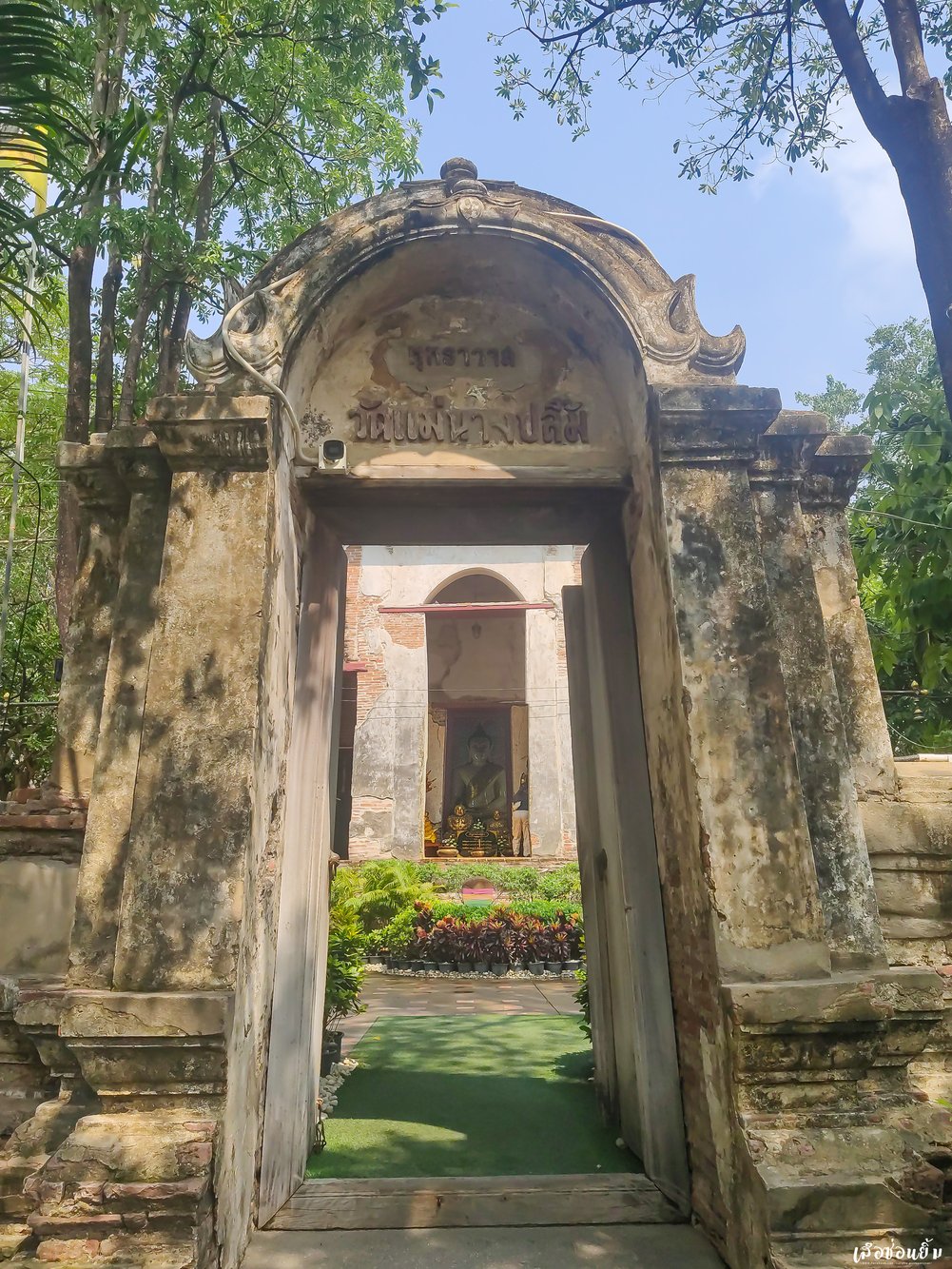
The Shrine of Luang Pho Khao
This brick and stucco temple (based on the Chinese porcelain decorations with floral motifs on the gable, it is estimated to have been renovated during the reign of King Rama III) houses the "Phra Phuttha Nimit Mongkhon Si Rattana Trai" or "Luang Pho Khao," as it is popularly known among locals.
This white Buddha statue, with the exception of its black hair, has a serene and benevolent smile. The vihara also houses statues of the Buddha in the standing posture holding an alms bowl, the subduing the ocean posture, the naga sheltering posture, and the Sangkachai posture. (According to historical records, the central door of the vihara was once reserved for the passage of the king.) The high ceiling and massive columns supporting the roof of the vihara attest to its age and classic beauty.
According to local residents, Luang Pho Khao is a highly revered and sacred figure. Visitors are encouraged to pay their respects and seek his blessings. He is widely regarded as a benevolent and compassionate deity.

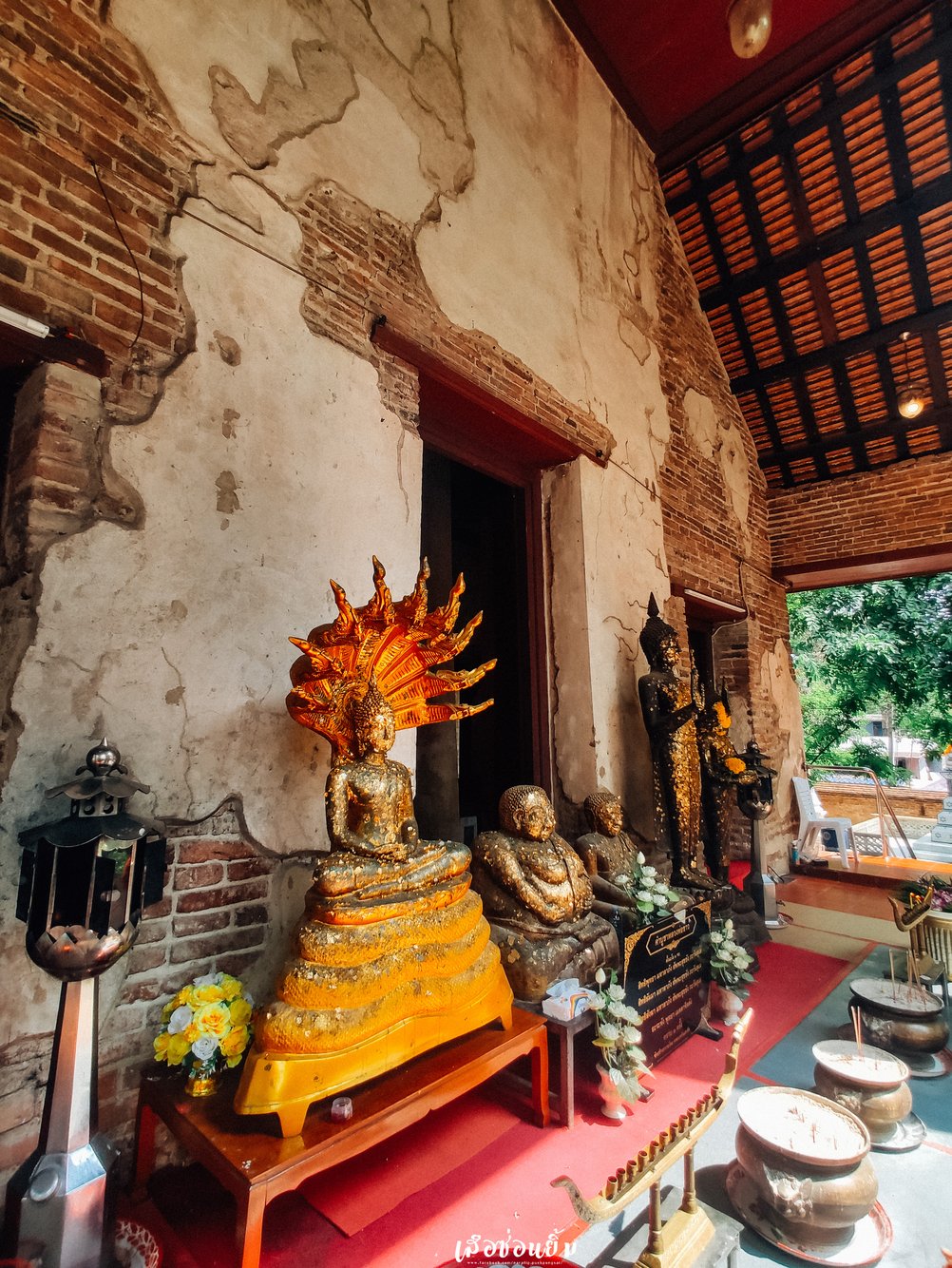

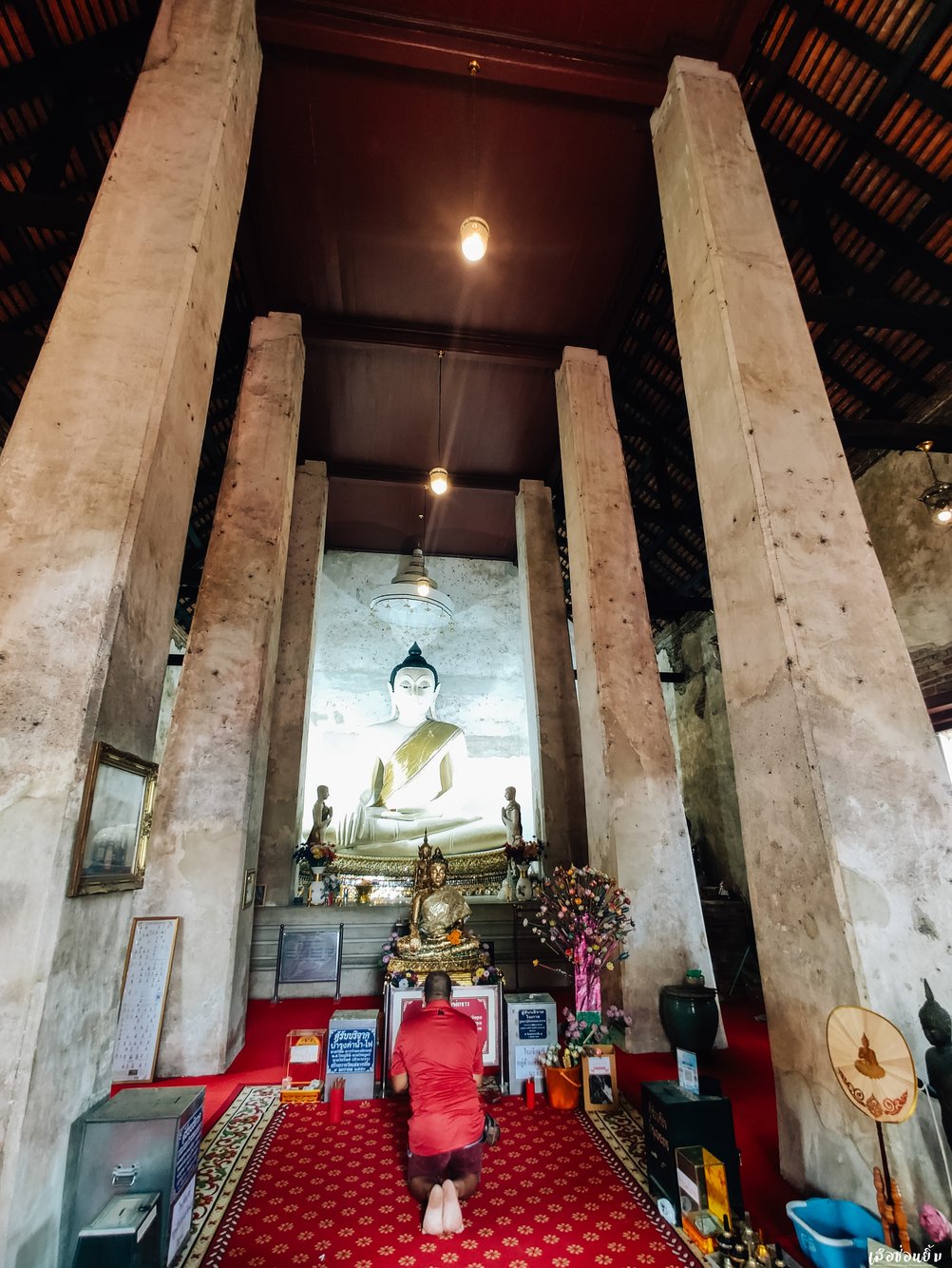
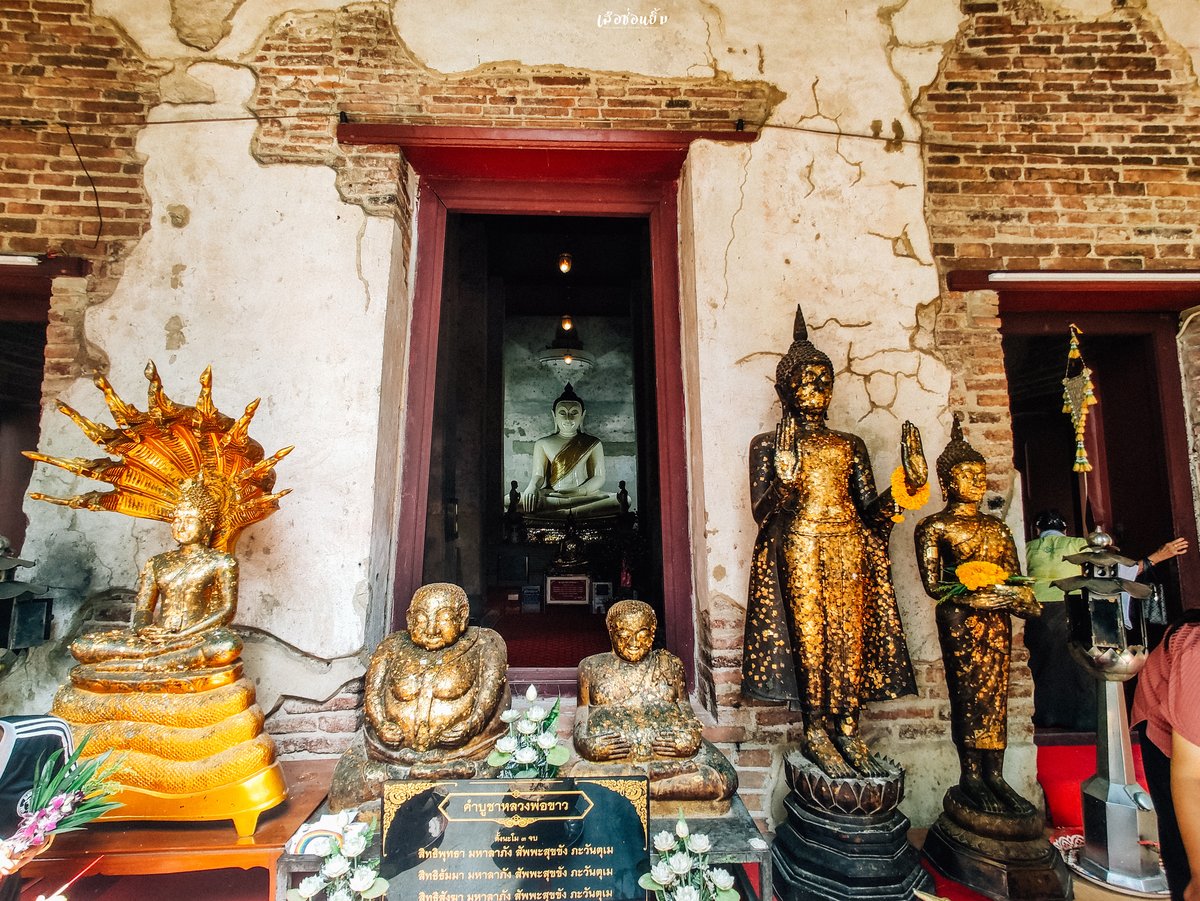
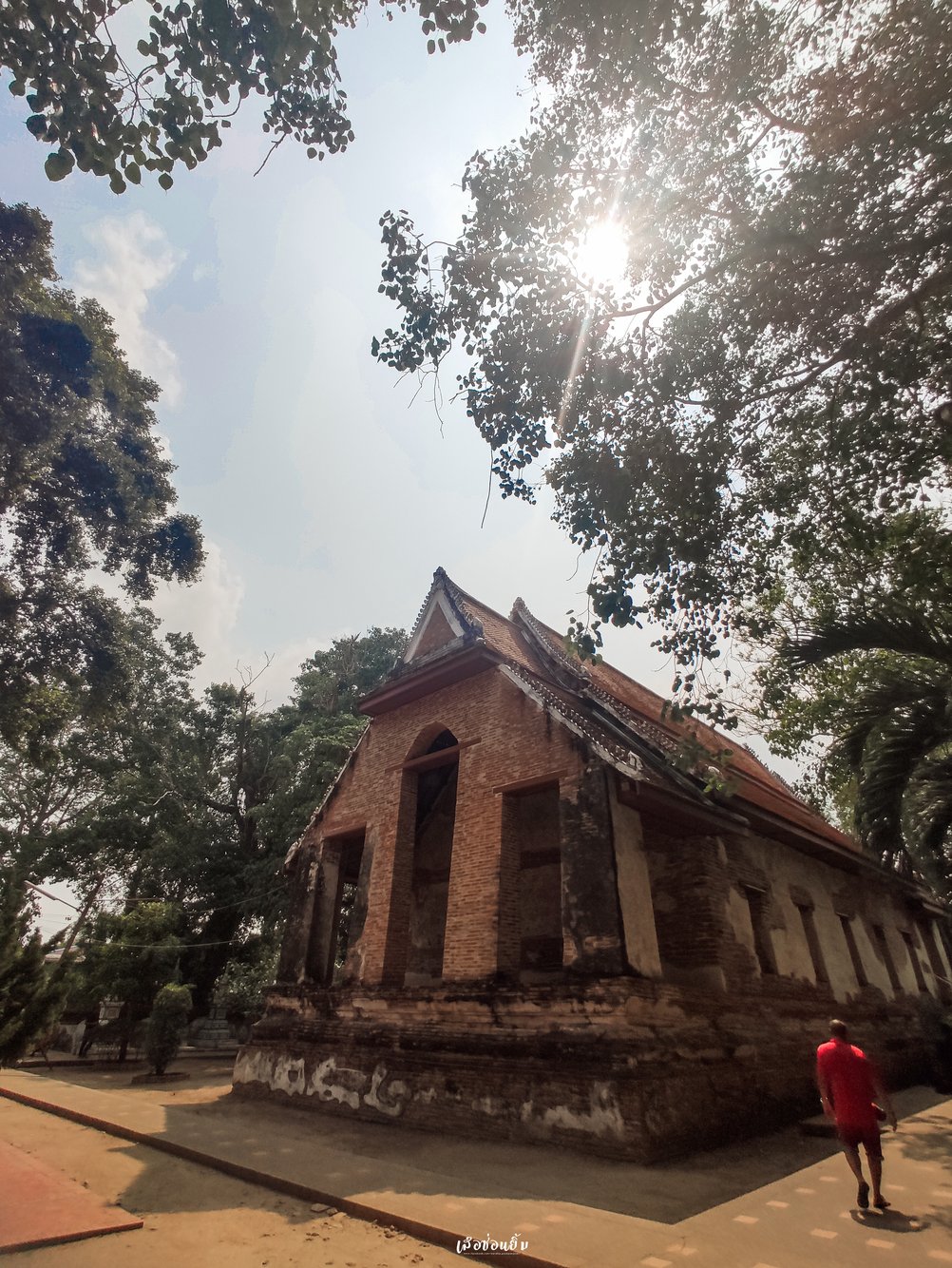
The Ubosot
The Ubosot is the most sacred building in a Buddhist temple complex. It is the ordination hall where monks are ordained and where important ceremonies are held. The Ubosot is typically a rectangular building with a high,尖顶的屋顶. The walls are often decorated with murals depicting scenes from the life of the Buddha. The interior of the Ubosot is usually quite simple, with a large statue of the Buddha in the center. The Ubosot is a place of great reverence for Buddhists, and it is important to dress modestly and behave respectfully when visiting one.
To the left of the viharn is the ubosot, or ordination hall, of Wat Mae Nang Pliuem. The ubosot is a rectangular building with a gable decorated in the same style as the viharn. Inside, it houses the principal Buddha image, "Luang Pho Pliuem," or "Phra Phuttha Maha Piti Deva Narimit Patimakorn," in the attitude of subduing Mara. The ubosot has only one door, at the front, which adds to its imposing character.


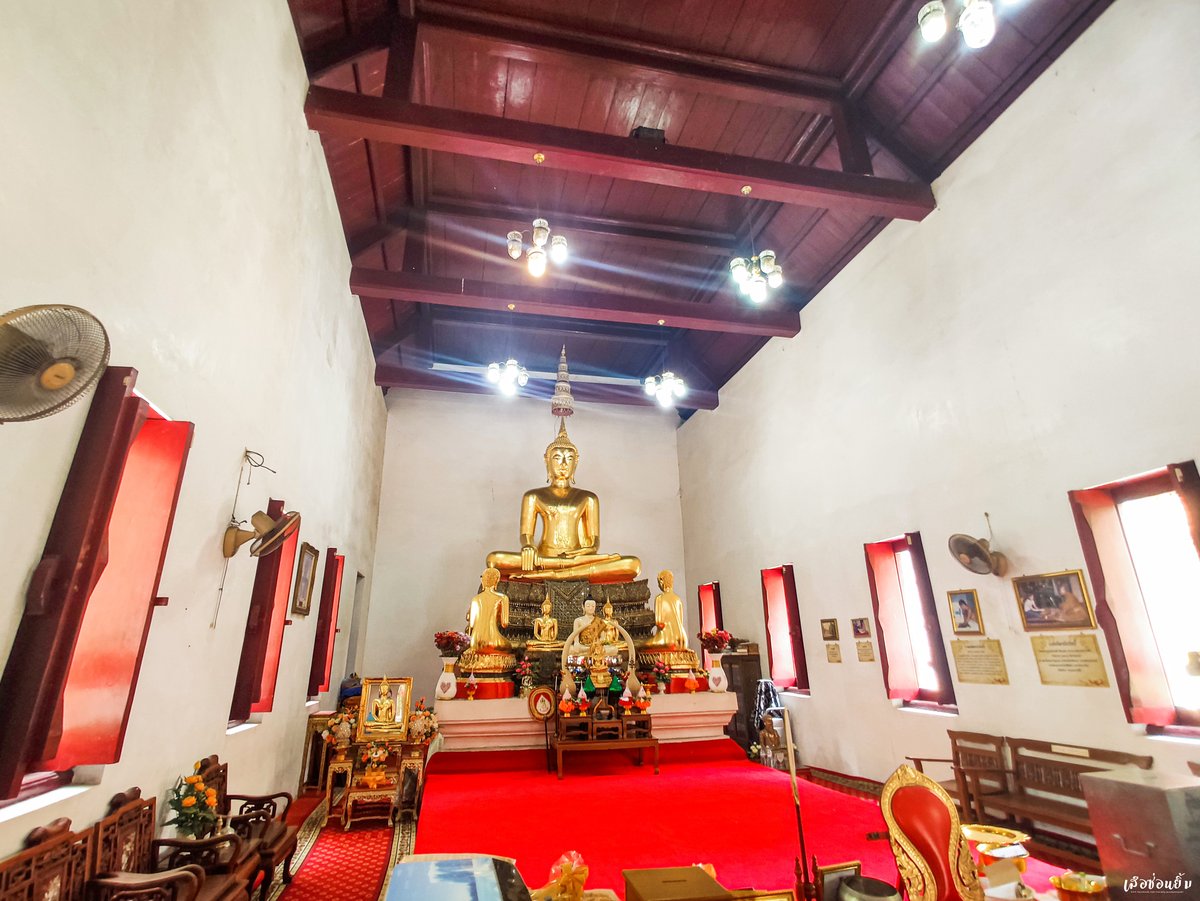
Key Pagodas
The large, bell-shaped stupa at Wat Mae Nang Pliuem, estimated to have been built in the 20th-21st centuries CE, is a prominent landmark. Located behind the main wiharn housing the revered Luang Pho Khao statue, it stands majestically on a square base adorned with 36 sculpted lions. This stupa is one of only two in Ayutthaya Province with a lion-shaped base, making it a significant heritage site in Thailand. Scholars have noted its unique blend of Sinhalese and Sukhothai artistic styles, highlighting its beauty and historical value. (Source: Siang Sat Atit, 2019)
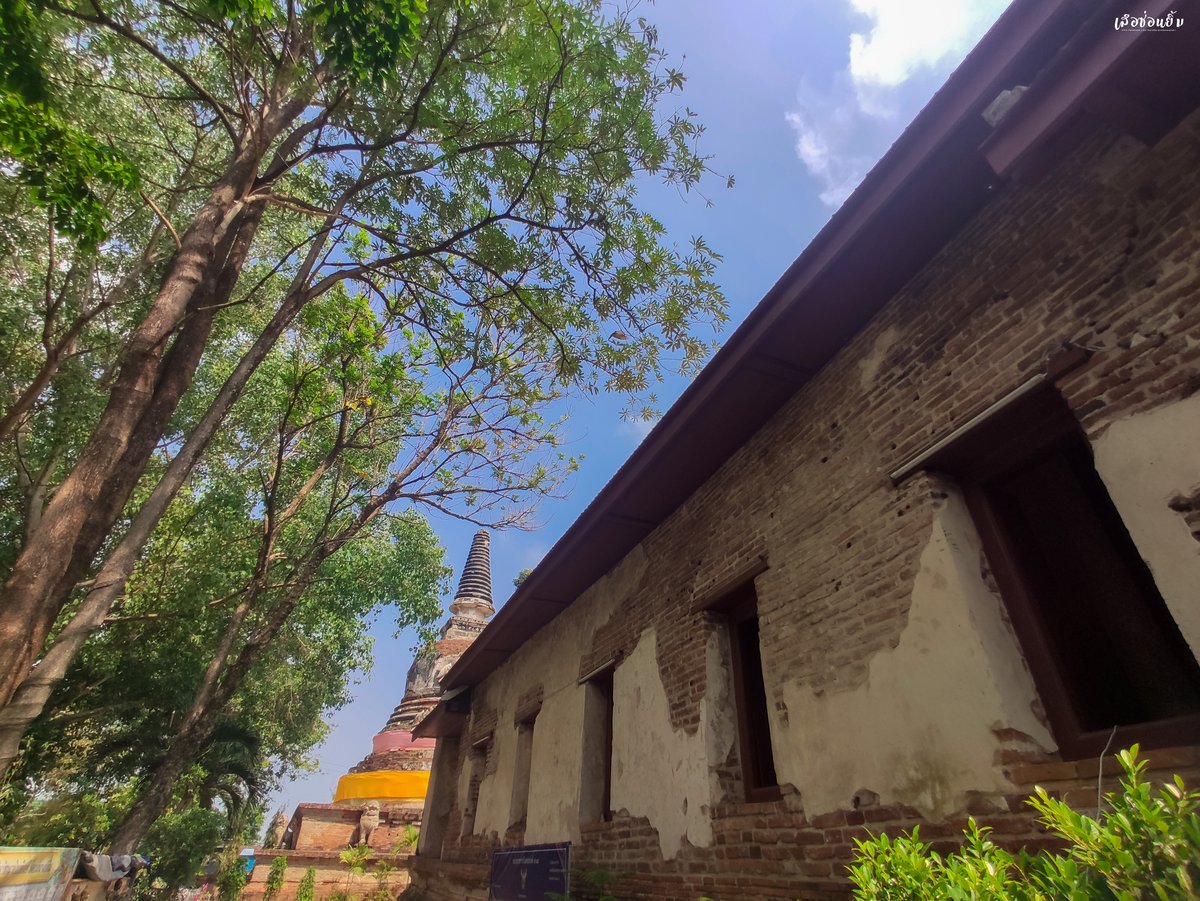
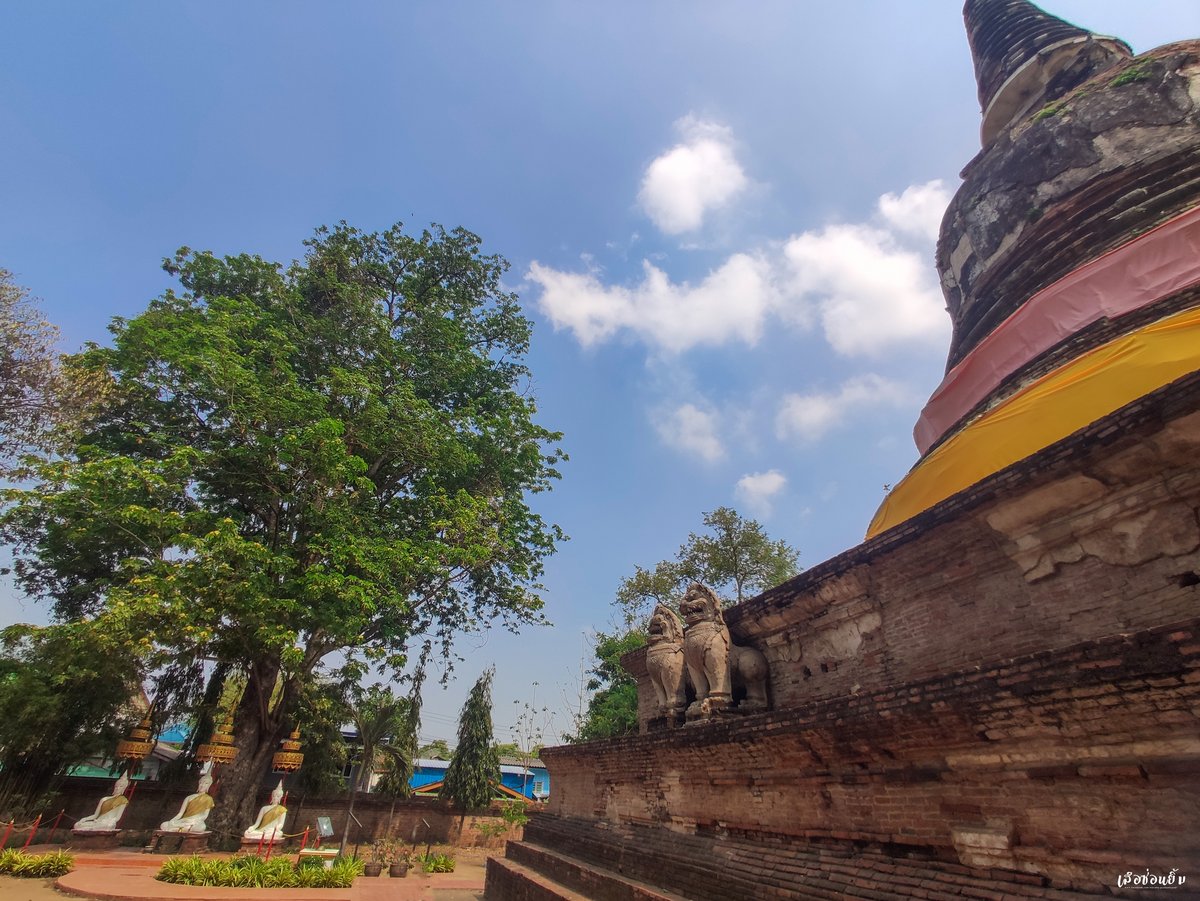
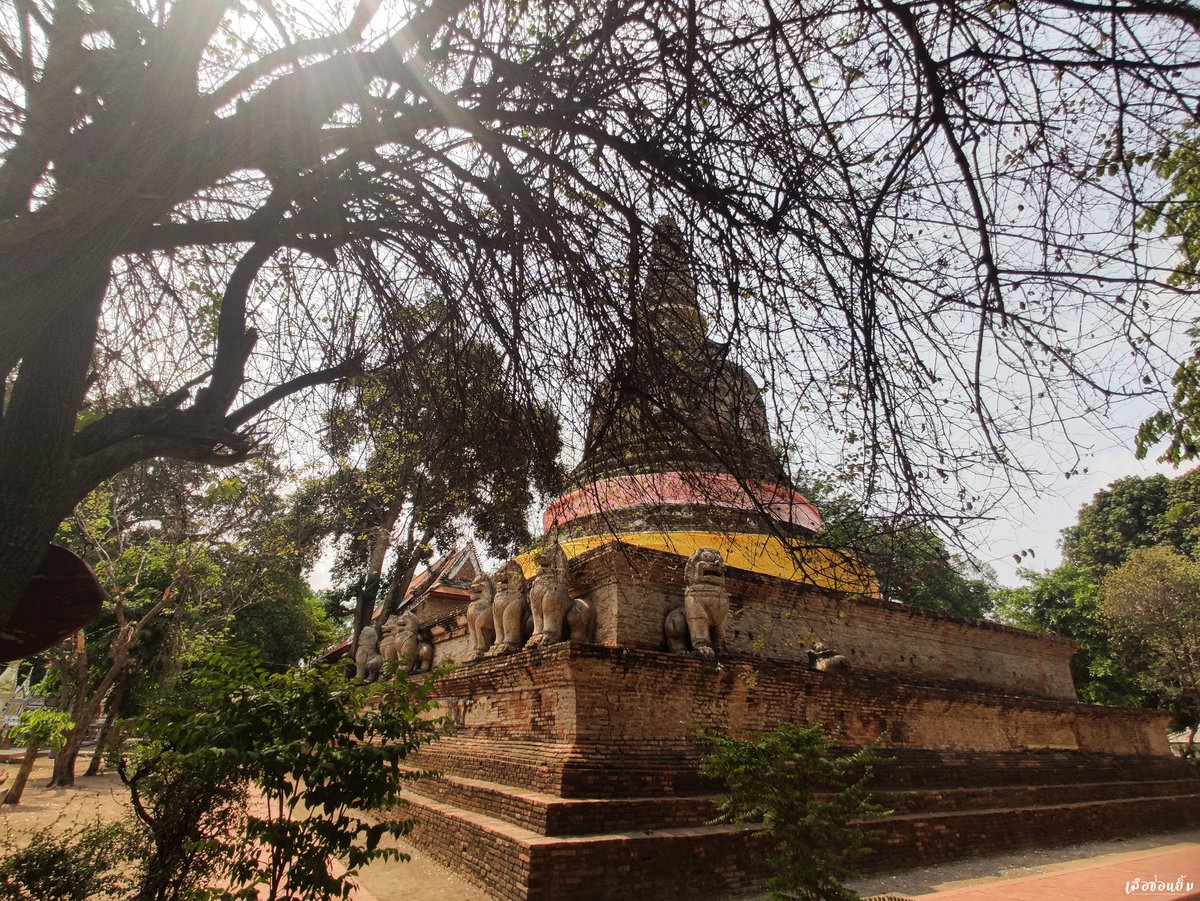
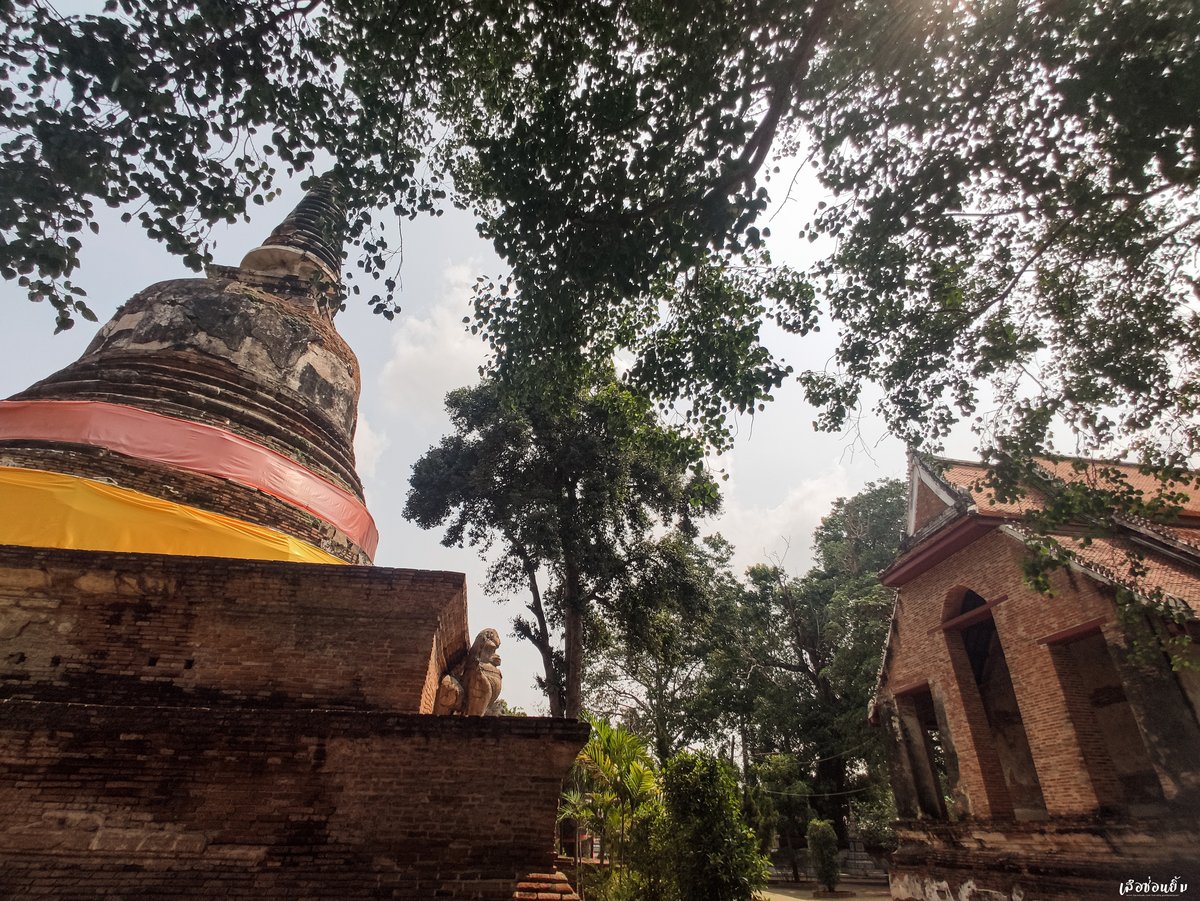
The Shrine of Mae Nang Pliu
Adjacent to the Grand Pagoda, the "Shrine of Lady Plearn" stands as a significant destination for devotees of fortune. This site attracts a steady stream of statisticians and mathematicians, particularly at the beginning and middle of each month, as evidenced by the offerings and silk sashes left by those who have experienced success. The sheer volume of these offerings speaks to the shrine's perceived efficacy.
Visitors to the temple are drawn not only by the auspicious numbers associated with it, but also by the allure of Mae Nang Plim. This deity is believed to bring good fortune, and her presence has undoubtedly contributed to the temple's popularity. While seeking blessings and prosperity, visitors are encouraged to maintain a respectful and mindful demeanor.

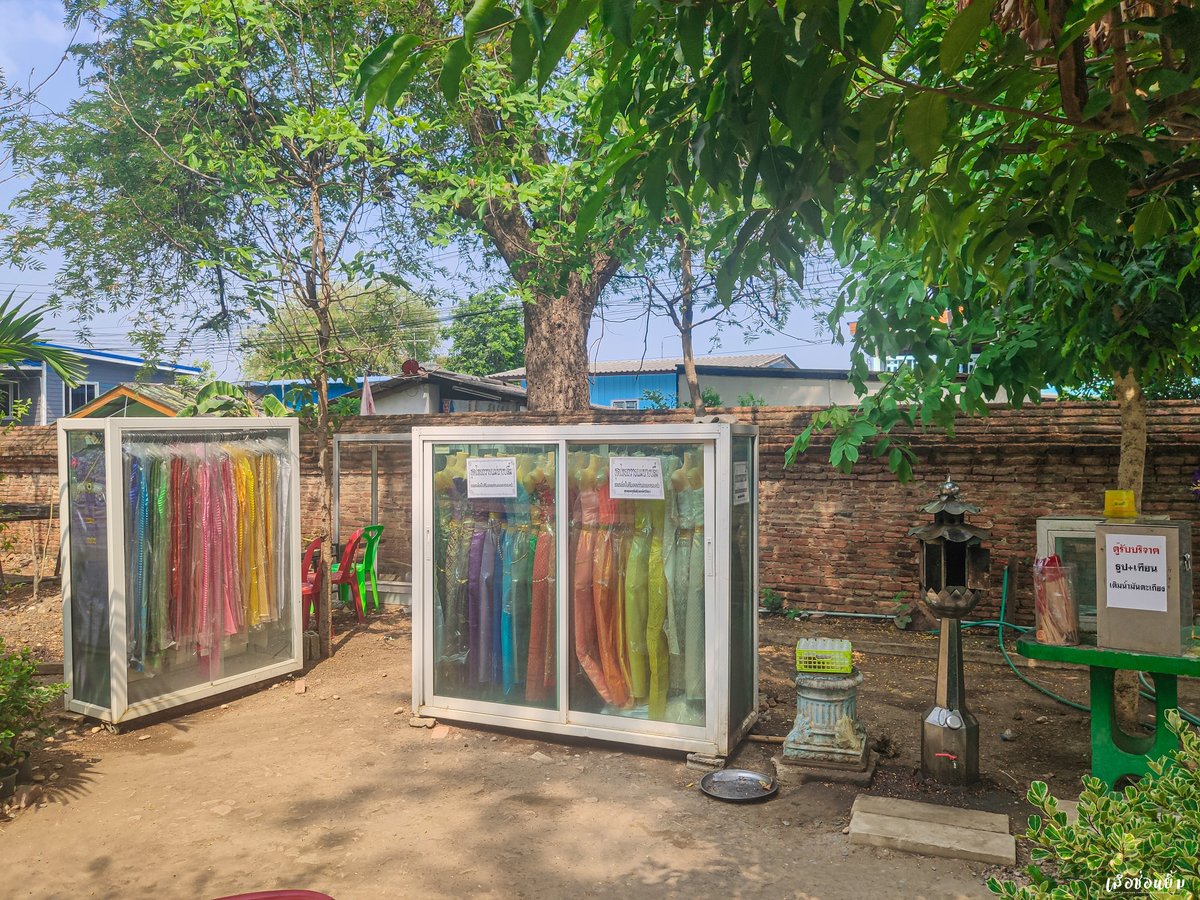
The Legend of King Naresuan and the Old Woman "Mae Plim"
The Legend of King Naresuan
This penultimate chapter presents anecdotes, stories, and tales for the reader's enjoyment. Some of these may be familiar, having been featured in the film "The Legend of King Naresuan the Great" (though the specific part is unclear). For those unfamiliar with these stories, please continue reading. The story goes as follows…
Mae Plim, a solitary villager residing on the outskirts of Ayutthaya, found herself alone one evening. As the rain poured relentlessly, she noticed a lone figure rowing a boat towards her humble abode. To her surprise, it was King Naresuan himself, drenched from the downpour. With a warm and welcoming gesture, Mae Plim invited the king into her humble dwelling.
Despite his warrior-like demeanor, the prince spoke loudly. "Mother, please do not be so loud," warned Mae Plim. "It is late, and the king might hear you and become angry." However, the prince only raised his voice further, demanding wine to warm his cold and wet body. Mae Plim was even more alarmed, as it was a holy day. She agreed to his request on the condition that he keep it a secret, fearing the king's wrath.
King Naresuan's Promise and the Legacy of Mae Plim
In this passage, we learn about the relationship between King Naresuan and Mae Plim. King Naresuan, after receiving a promise from Mae Plim, accepts a drink from her. He then spends the night at her house before returning to his palace the next morning. Later, he sends a procession to bring Mae Plim to live in the palace.
Mae Plim is described as a compassionate and loyal individual, deeply devoted to the king. After her death, King Naresuan honors her memory by organizing a grand funeral and constructing a temple in her name, aptly called "Wat Mae Nang Plim" (Temple of Lady Plim).
This passage highlights the respect and admiration King Naresuan held for Mae Plim. Her unwavering loyalty and kindness earned her a place of honor in the king's court and a lasting legacy through the temple dedicated to her memory.
Upon exiting Wat Mae Nang Pliuem, crossing the street to the opposite side will lead you to another section of the temple. A bridge will then take you across a canal to a market. This market is a place we try to visit every time we have the opportunity to be in Ayutthaya. The name of this market is "Talat Hua Ro". When visiting a market like this, we would like to recommend two shops to those who are interested in following us. By now, some of you might be feeling hungry. Well, let's follow us!


The First Shop
If you are looking for a light snack to whet your appetite before your main course, and if you have ever had delicious fried tofu before, then this shop is one of our favorites. The fried tofu here is the best, with a thin, crispy exterior and a soft, fluffy interior. It is delicious on its own, even without reheating, and the special dipping sauce makes it even better. It is so delicious that it is hard to find a shop that can compare (if you think we are exaggerating, you should try it). We recommend this shop run by an aunt in the Huaror market. We guarantee that you may forget many of the places you have eaten before. However, there are two things you should be aware of.
1. The shop only accepts cash, no transfers.
2.The Auntie's culinary creations are a testament to her independent spirit and dedication to quality. Her aversion to pressure ensures a relaxed and patient ordering process, as some items may require preparation. During peak hours, the Auntie may declare certain items unavailable, prioritizing quality over quantity. This approach reflects her commitment to serving fresh, delectable dishes, ensuring a truly satisfying culinary experience.
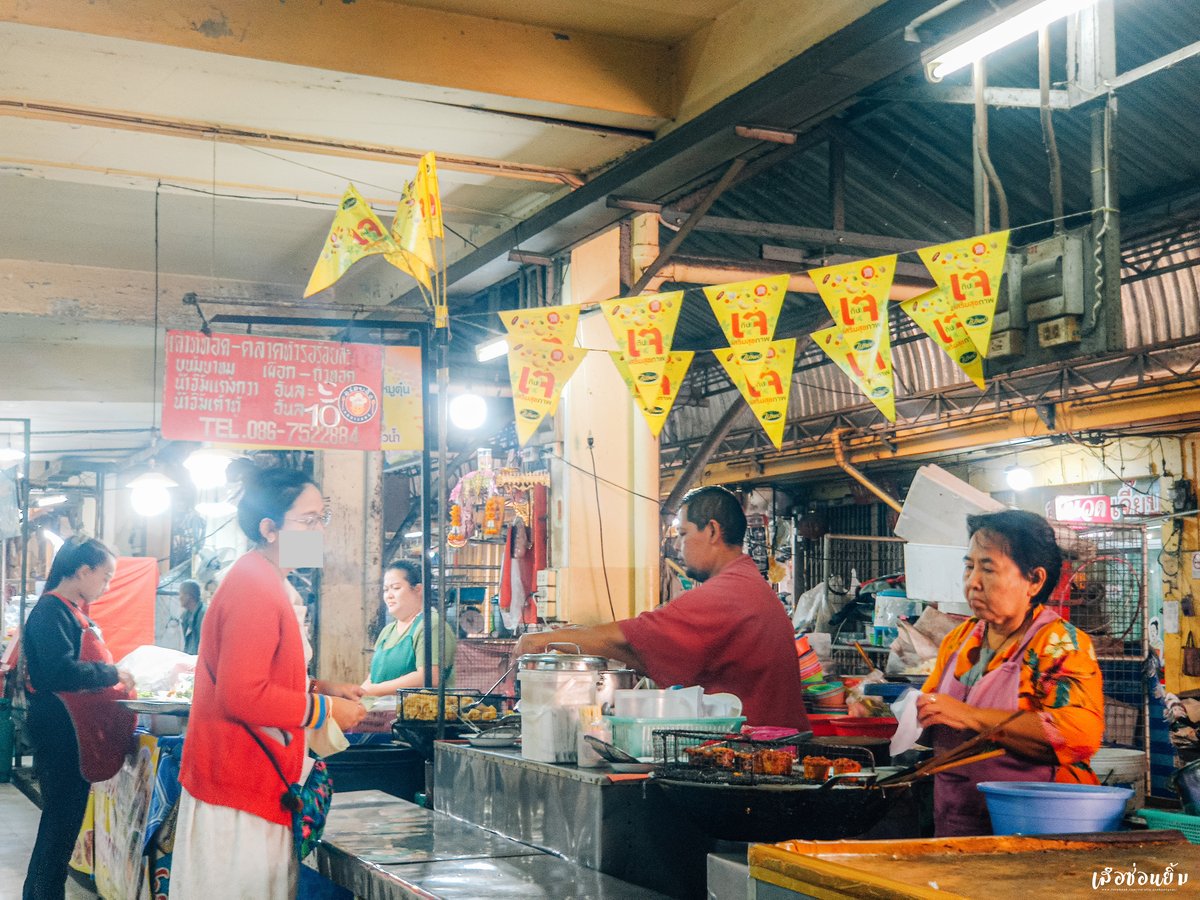
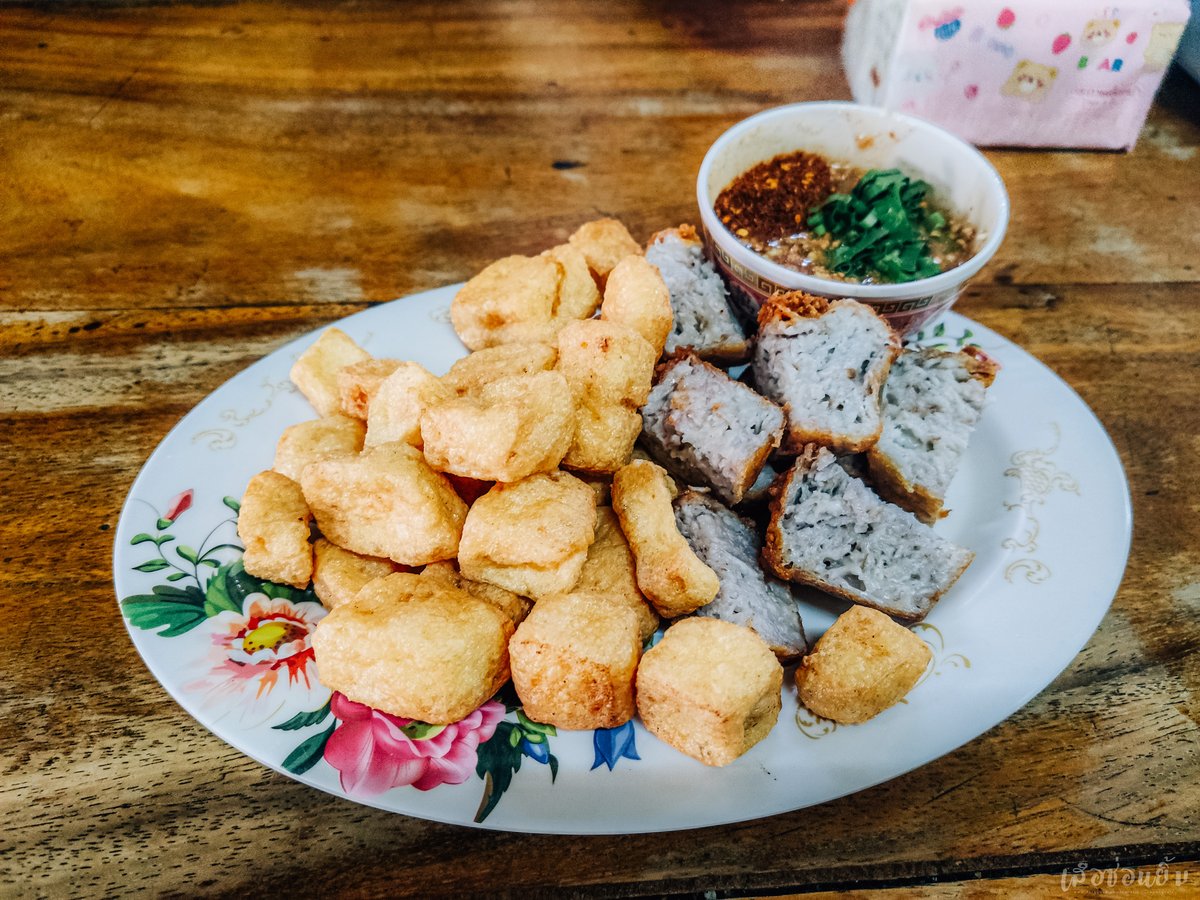
The Second Shop
After indulging in fried delights, a refreshing sweet drink is a must. Whether it's hot or iced tea, black coffee, or a milky treat, the perfect complement awaits just across from the fried tofu stall. The friendly owner, whose age defies categorization (but definitely not an "uncle"), offers their culinary creations at remarkably affordable prices, prioritizing community over profit. The sweet and fragrant flavors are sure to tantalize your taste buds, and if you order a hot beverage, a complimentary cup of hot tea awaits to cleanse your palate. So, don't hesitate to stop by and support this kind-hearted vendor. Remember, their motto is "selling for the community," and their generosity is truly exceptional.



Let's gather and make merit together!
At the very least, it will be a start to giving alms, accumulating merit, and enjoying a trip all at the same time.
May the merit of generosity be fulfilled, may the merit of preparing for generosity be fulfilled, may the merit of the ultimate goal of generosity be fulfilled.
References: museumthailand.com, ayutthaya.go.th
Sawaddee
- Tiger with a hidden smile -
เสือซ่อนยิ้ม
Friday, December 13, 2024 3:56 PM













